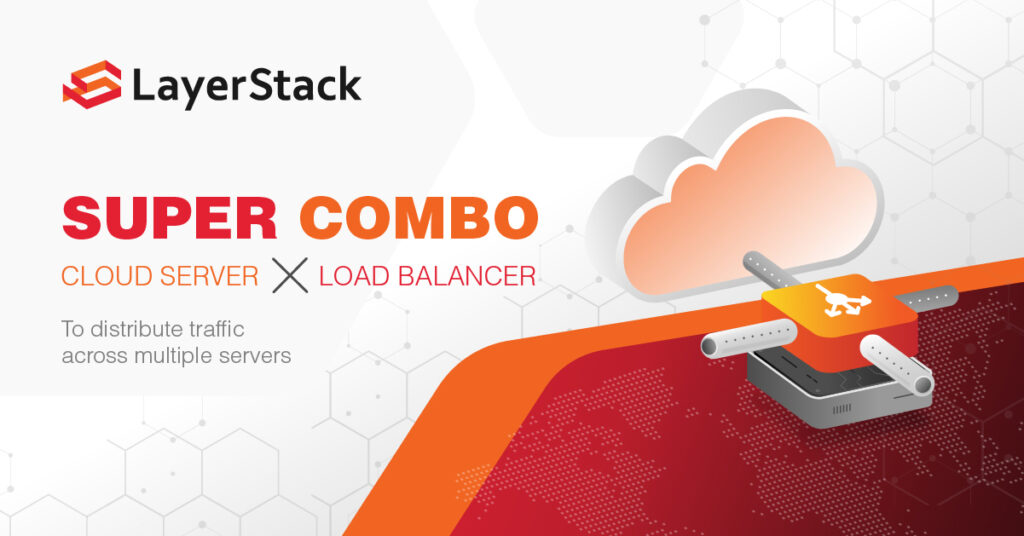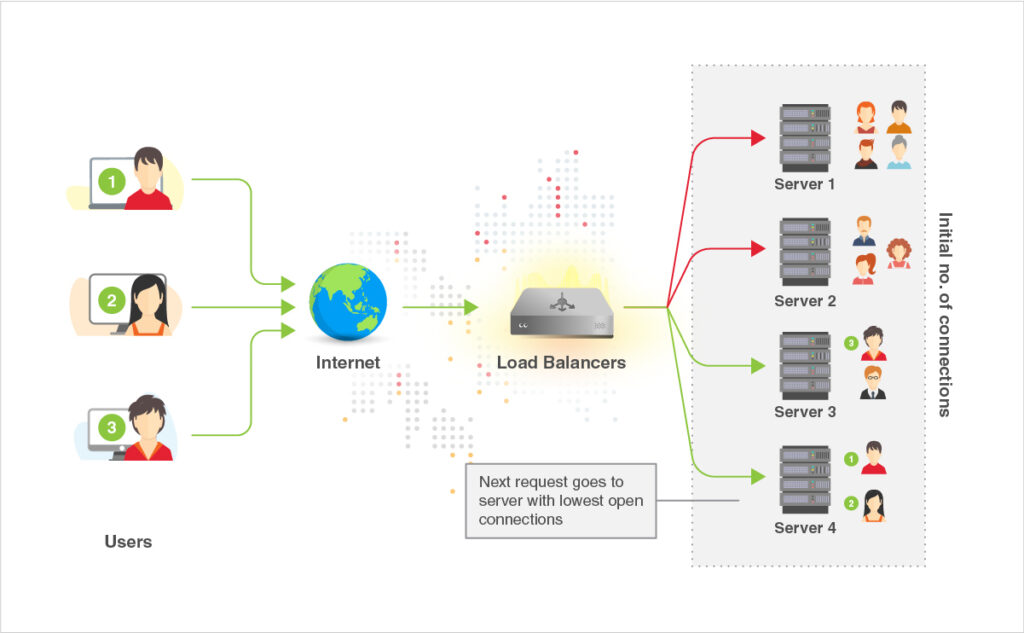
To better capitalize on the investments, many companies are turning to load balancing products to exchange data more efficiently across networks today. As the need for computing and storage resources increases, Cloud Server Load Balancing has proven very effective for saving businesses a great many hours on IT operations. If you have not yet found a solution to high traffic demands and slow performing systems, here is why you should use LayerStack’s Load Balancer.
What is Load Balancer?
An essential triage to Internet traffic with practical security features, Load Balancer is the gatekeeper that directs traffic to the best available servers for optimal application efficiency and can distribute load-balanced resources in single or multiple regions. This process involves different algorithms, all come with unique pluses. This is the most common algorithm where all available servers form a queue. When a new request comes in, the Load Balancer forwards it to the first server in the queue. Upon the next request, it will distribute the traffic to the next server on the list.
How Load Balancer Works?
Cloud-based Load Balancer takes a software-based approach to distributing network traffic across resources, as opposed to hardware-based load balancing, which is more common in enterprise data centers. A Load Balancer receives incoming traffic and routes those requests to active targets based on a configured policy. A load balancing service also monitors the health of the individual targets to ensure that those resources are fully operational.
In the diagram below, servers 1 and 2 are serving a higher demand of requests. Therefore, when client 1 comes in, their request is directed to server 4 as it is currently idle. The next client (2) is assigned to server 4 as it is now one of the two servers (3 and 4) with the least connections. Now, with server 4 having two connections while server 3 having just one, the third incoming client request is routed to server 3 – the one with the least active connections.

Why is Load Balancer Important?
There are a few reasons why Load Balancer is important. It allows you to:
- Distribute load-balanced resources in single or multiple regions
- Scale your resources up or down with intelligent autoscaling
- Meet your high availability requirements
- Use cloud content delivery network (CDN) for optimal content delivery
With LayerStack’s Load Balancer, you can serve content as close as possible to your users, on a system that can respond to over one million queries per second!
The Benefits of Load Balancer
If you need a range of cloud services and infrastructures with a vision to scale up the size of your company, you need LayerStack as your cloud Load Balancer provider. This is because you would have more global customer requests to meet.
Even if you do not plan to have additional cloud services in your cloud infrastructure, you may encounter cases where the workload drastically increases. If you cannot respond to server requests at appropriate times, your business may suffer and that is why your cloud application cannot do without a Load Balancer.
Here are some of the major benefits of using a cloud Load Balancer:
- Flexibility – application traffic is managed with ease even if a specific node cannot take the workload
- High Performing Applications – scale your services and ensure that increased traffic would not lower efficiency
- Handle Traffic Surges – achieve optimum results in the shortest possible response time
- Reliability and Increased Scalability – Load Balancer can easily respond to traffic surges, and is efficient at redirecting traffic from the crashed source
Optimize Your Business with Load Balancer
Cloud-based Load Balancer is the need of the hour. This is evident from the ever-increasing demand for cloud service providers, applications, and computing environments. In conclusion, cloud-based Load Balancer enables scalable, cost-effective and global cloud environments. Cloud platforms are here to bridge the gap and provide SaaS-oriented organizations a solution that best fits their load balancing needs.
Global Private Network – Transferring Sensitive Data in a Secure Environment
Today’s businesses are all about secure and reliable connectivity. While your business grows you will need different resources, applications and network, and when it comes to transferring sensitive data, you need the data to be transmitted via a high capacity and low latency isolated network.
In addition to Global Load Balancing, you can also use Global Private Network to achieve the same performance. LayerStack’s Global Private Network is the upgrade version of the original private network. Users can transfer data in end-to-end encryption through the private Layer 2 connection locally, regionally and globally. Data can only transfer between activated regions, so users need to activate at least two regions or local virtual machines to transfer data.
For more on Cloud Server, Dedicated Cloud and the latest tech trends, please follow us on Facebook or LinkedIN. Should you have any enquiries regarding our Load Balancer and Global Private Network solutions, please feel free to email us at [email protected].


